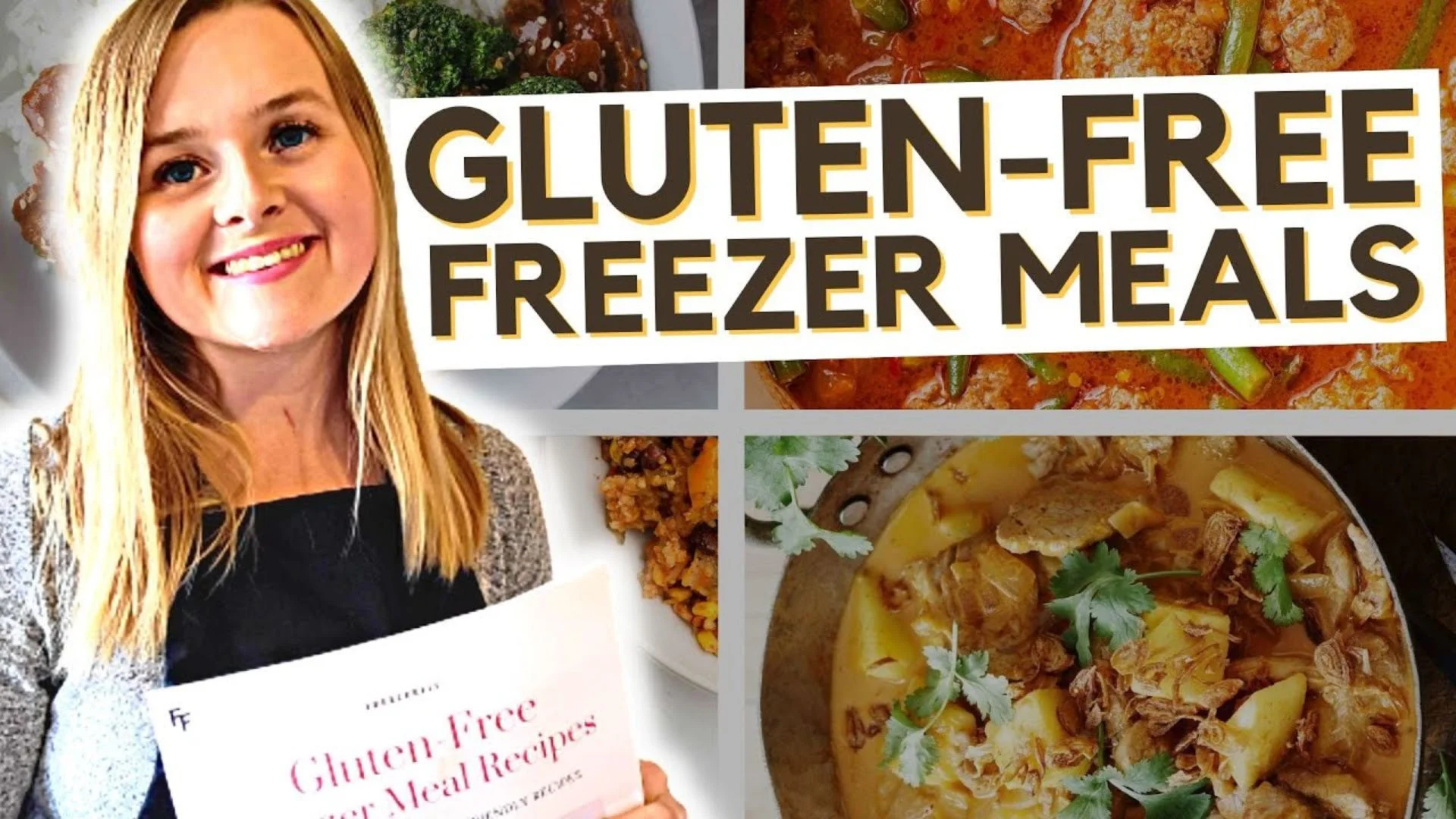- Growing Demand and Convenience
- Modern Lifestyles: Discuss how busy schedules and the need for convenience have driven the popularity of freezer meals.
- Health Focus: Highlight the increasing interest in gluten-free and dairy-free options due to health concerns and dietary preferences.
Section 1: Benefits of Freezer Meals
Convenience and Time-Saving
- Meal Prep Efficiency: Explain how freezer meals allow for efficient meal prep by cooking in bulk and storing for later use,
saving time on hectic weekdays. - Flexibility: Discuss the flexibility of freezer meals, enabling customization to accommodate individual dietary needs, preferences, and portion sizes.
Health and Nutrition
- Nutrient Retention: Detail how freezing preserves the nutritional content of ingredients, often better than prolonged refrigeration or storage.
- Balanced Eating: Emphasize how freezer meals can support balanced eating habits by pre-planning nutritious meals with controlled portions.
Section 2: Essential Ingredients and Substitutions
Gluten-Free Components
- Alternative Grains: List and describe gluten-free grains suitable for freezer meals, such as quinoa, brown rice, buckwheat, and gluten-free oats.
- Flour Substitutes: Recommend gluten-free flours and starches for thickening sauces or coating foods,
like tapioca starch, cornstarch, or gluten-free baking blends.
Dairy-Free Substitutes
- Non-Dairy Milks: Provide options for dairy-free milks suitable for cooking and baking,
including almond milk, coconut milk, oat milk, and rice milk. - Cheese Alternatives: Explore dairy-free cheese options made from nuts (like cashews or almonds),
soy-free options (using coconut oil or nutritional yeast), or commercial varieties suitable for melting and flavoring.
Section 3: Cooking and Freezing Techniques
Freezer-Friendly Cooking Tips
- Cooking Methods: Explain suitable cooking methods for freezer meals, such as slow cooking, braising,
or assembling casseroles and soups for later freezing. - Packaging Strategies: Provide detailed instructions on proper packaging techniques to prevent freezer burn and maintain food quality,
including vacuum sealing, using freezer-safe containers, and labeling.
Reheating Instructions
- Safe Thawing: Discuss safe thawing methods, such as overnight in the refrigerator or using the microwave, to preserve flavors and textures.
- Reheating Tips: Offer tips for reheating freezer meals to ensure even heating and prevent overcooking,
adjusting cooking times and temperatures as needed for different dishes.
Section 4: Recipe Inspiration
Breakfast Options
- Make-Ahead Breakfast Burritos: Provide a step-by-step recipe for gluten-free tortillas filled with scrambled tofu or vegetables,
dairy-free cheese, and optional salsa, wrapped individually for easy morning reheating. - Frozen Smoothie Packs: Offer instructions for assembling frozen smoothie packs with fruits,
leafy greens, and dairy-free yogurt or milk alternatives, ready to blend for a quick and nutritious breakfast.
Lunch and Dinner Creations
- Chicken and Vegetable Stir-Fry: Share a freezer-friendly recipe using gluten-free tamari sauce,
chicken or tofu, mixed vegetables, and quinoa or rice, portioned into containers for easy reheating. - Vegetarian Chili: Provide a hearty vegetarian chili recipe with beans, tomatoes, onions, and spices,
suitable for freezing in batch portions for convenient lunches or dinners.
Comfort Foods
- Gluten-Free Lasagna: Detail a recipe using gluten-free lasagna noodles, dairy-free cheese, tofu ricotta, and marinara sauce, assembled and frozen in portions for family dinners or individual servings.
- Dairy-Free Macaroni and Cheese: Offer a creamy mac and cheese recipe using gluten-free pasta, dairy-free milk, nutritional yeast, and a gluten-free breadcrumb topping, perfect for freezing and reheating.
Section 5: Practical Tips for Freezing and Meal Planning
Batch Cooking Strategies
- Weekly Meal Prep: Provide a sample meal prep plan for making freezer meals, including choosing recipes, grocery shopping lists, and scheduling cooking sessions.
- Labeling and Organization: Advise on labeling freezer meals with ingredients, cooking instructions, and date of preparation for easy tracking and rotation.
Dietary Considerations
- Allergen-Free Awareness: Stress the importance of checking food labels for hidden sources of gluten and dairy in packaged ingredients, ensuring meals remain allergen-free.
- Variety and Nutritional Balance: Encourage readers to vary ingredients and meal types to maintain a balanced diet, incorporating a mix of proteins, vegetables, and grains in freezer meals.
Section 6: Conclusion
- Benefits of Gluten-Free, Dairy-Free Freezer Meals: Summarize the advantages of preparing and enjoying freezer meals that are gluten-free and dairy-free, including convenience, nutritional benefits, and support for dietary preferences.
- Empowerment and Resources: Encourage readers to explore freezer meal cooking with confidence, providing additional resources such as recipe books, online communities, and meal planning apps.
- Final Thoughts: Share personal insights on the benefits of freezer meal preparation, emphasizing the satisfaction of enjoying homemade, allergen-free meals while maintaining a healthy lifestyle.
This detailed outline provides a comprehensive framework for an article on gluten-free, dairy-free freezer meals, covering essential information, practical cooking tips, recipe inspiration, and meal planning strategies. Each section can be expanded with specific recipes, nutritional insights, and additional resources to empower readers in their journey towards preparing delicious and convenient allergen-free freezer meals. If you have any specific preferences or need further details on any section, feel free to let me know!


One Reply to “Gluten-Free, Dairy-Free Freezer Meals”